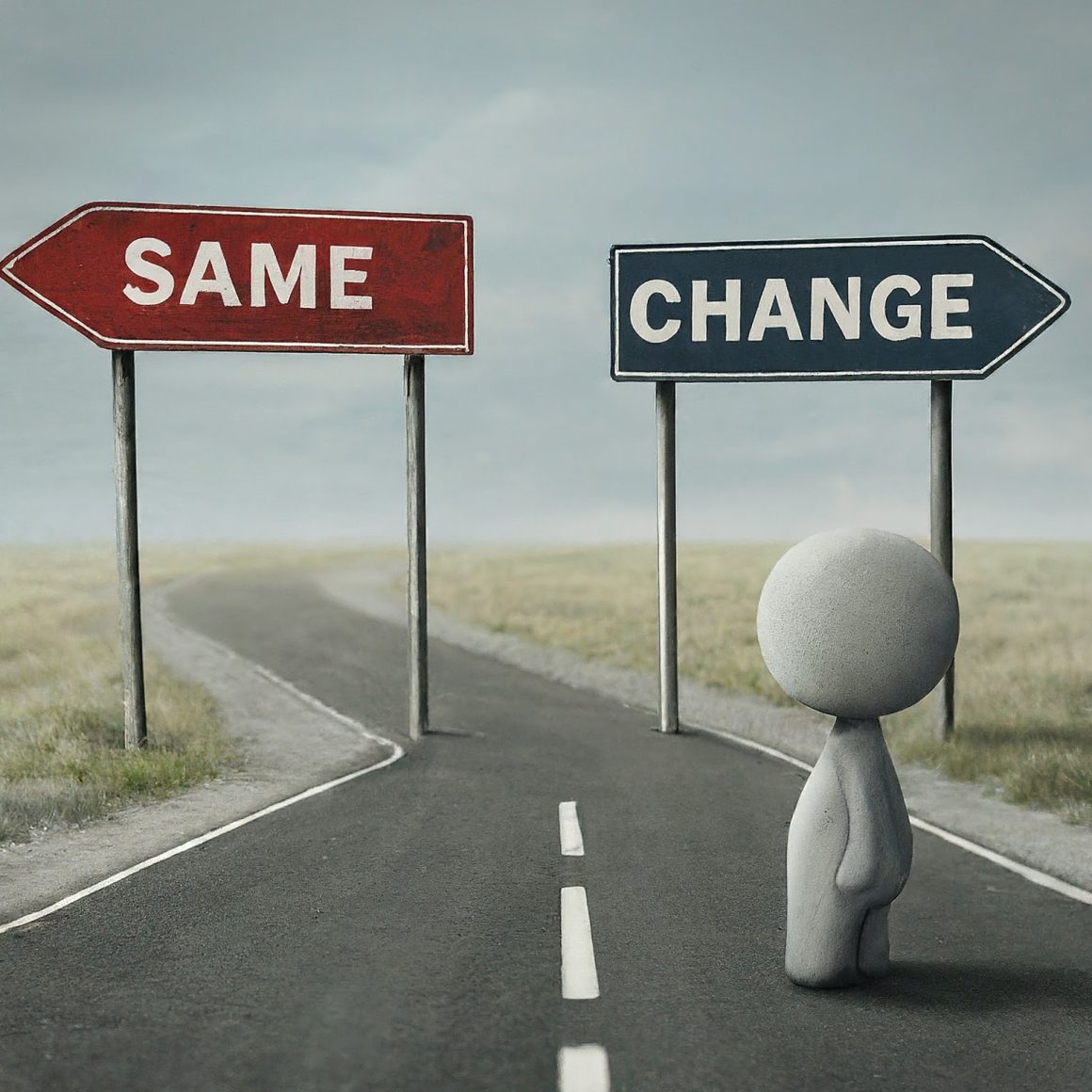Change is one of those things. It happens whether we want it to or not. It messes with who we are, what we care about, and how we live. Sometimes it’s amazing. Sometimes it feels like getting hit by a truck. Either way, it’s coming.
And even though change can be the thing that saves us, we still dig in our heels and fight it like crazy. Why? And how do we get better at dealing with it without losing our minds?
Let’s break it down.
Why We Fight Change, Even When It’s Exactly What We Need
Change isn’t always fireworks and big speeches. Sometimes it sneaks in, slow and quiet. Other times it kicks the door down and flips your whole life upside down. Either way, it screws with the things we’re used to. And let’s be honest—familiar, even when it sucks, feels safer than the unknown.
Fear loves to jump into that gap between “what we know” and “what might be.” Fear of screwing up. Fear of looking stupid. Fear of facing stuff about ourselves we’d rather leave buried.
I got a real taste of it back in 2015. Someone called me out—hard—about the way I was living. It stung. But it also cut through all the excuses I’d been hiding behind. Suddenly, staying stuck felt scarier than making a change. That’s when I knew I couldn’t keep going the way I was.
Facing our fear doesn’t make it disappear. But it gives us a chance to move forward on purpose instead of staying stuck by accident.
Why You Can’t Make Someone Else Change
Watching someone you love make bad choices is brutal. You want to shake them. You want to fix it. You want to drag them into a better life.
Here’s the thing, though: you can’t.
Real change doesn’t come from someone else pushing or begging or lecturing. It comes from inside. From wanting it bad enough to do the messy work yourself.
Even if you guilt-trip someone into changing, it usually doesn’t stick. They just snap right back to where they started the second the pressure’s off.
The best thing you can do? Support them. Cheer for them. Give them space to figure it out their own way. Even if it’s not the way you would have picked.
When Change Means Walking Away
Sometimes changing means facing the fact that a relationship—friendship, romance, whatever—just isn’t good for you anymore.
You grow. They grow. But sometimes you grow in opposite directions.
What used to feel like love and support starts feeling like chains and quicksand.
And when it gets to that point? Letting go might be the kindest thing you can do for yourself.
It’s not easy. It hurts like hell sometimes. But setting boundaries, finding new joys, and putting yourself back together is part of the deal. And you deserve that.
How to Tell if Someone’s Really Changed
Because let’s be real, a lot of people talk about change. Doesn’t mean they’re actually doing it. So how can you tell?
Here’s what to watch for:
- Accountability: They own what they did. No excuses. No finger-pointing.
- Consistency: They don’t just talk a good game. They live it, over time.
- New Insights: They actually get why they needed to change.
- Better Communication: They listen more. They speak more honestly.
- Humility: They know they’re still a work in progress, and that’s okay.
Real change doesn’t show up in grand speeches. It shows up in small, steady choices, day after day.
How Long Does Real Change Take?
Short answer: longer than you want it to.
Some stuff shifts fast. Other stuff drags out for months or years. It’s not about speed. It’s about direction. As long as you’re moving—even if you stumble—you’re doing it right.
Backslides happen. They don’t cancel out your progress. Keep going.
The Bottom Line: Change on Your Terms
Change is part of life. It’s scary. It’s messy. Sometimes it breaks your heart. But sometimes, it saves your life too.
The trick is choosing it for yourself. Not because someone shoved you into it. Not because you felt like you had to. But because you looked at your life and said, “I want better.”
Is there a change you’ve been thinking about? Maybe it’s time to take a tiny step toward it. Just one. You never know what’s waiting for you on the other side.
📌 Changelog
- April 28, 2025: Article re-written to add additional information.
- March 17, 2024: Original article posted.






